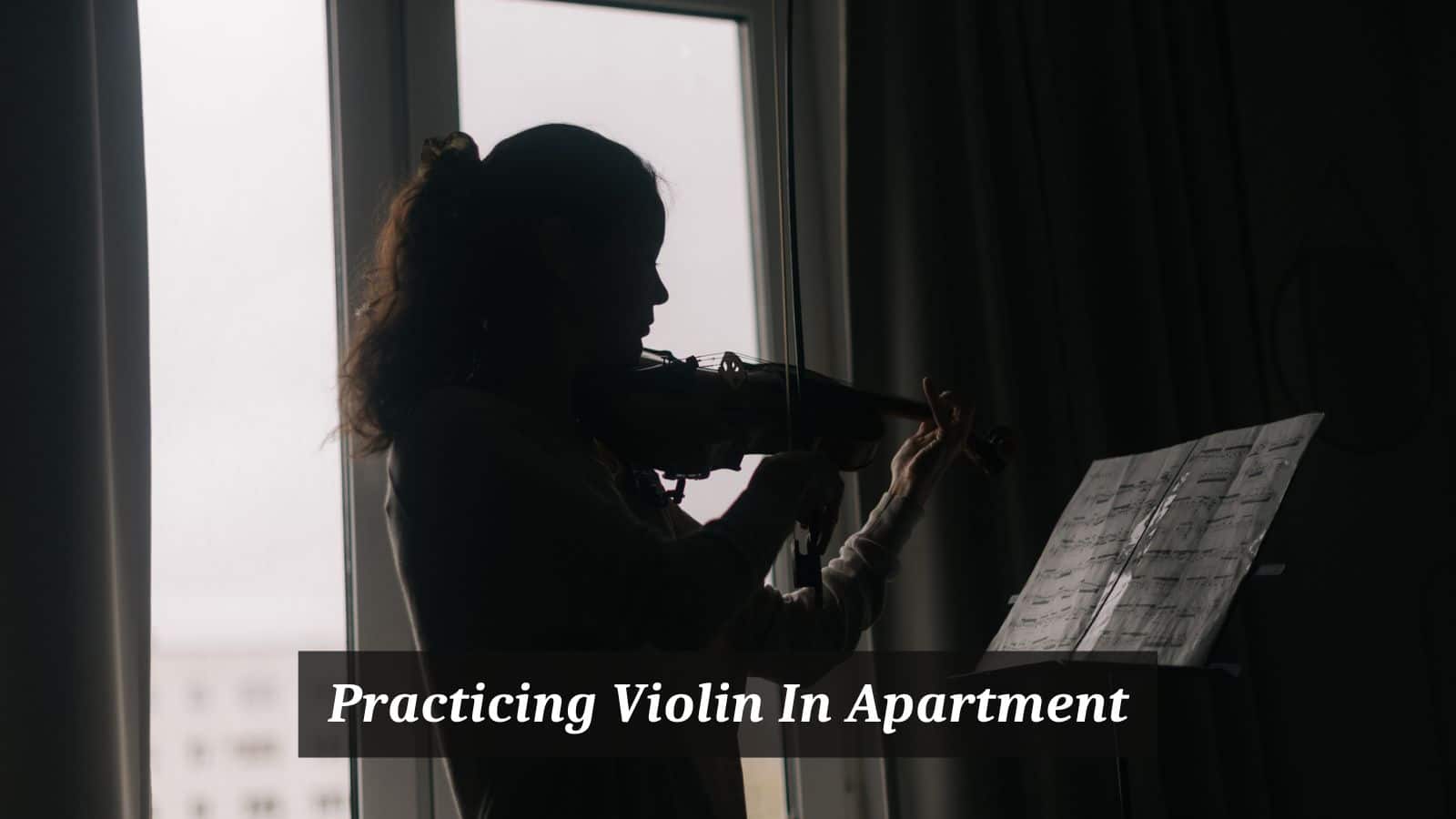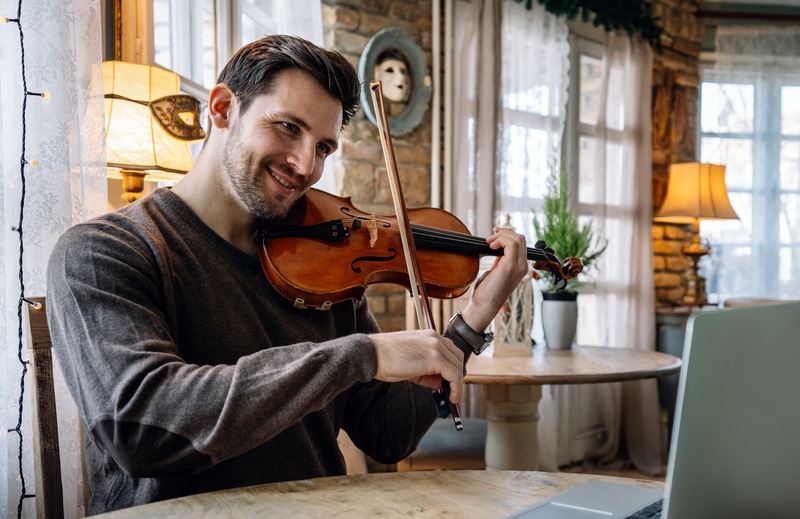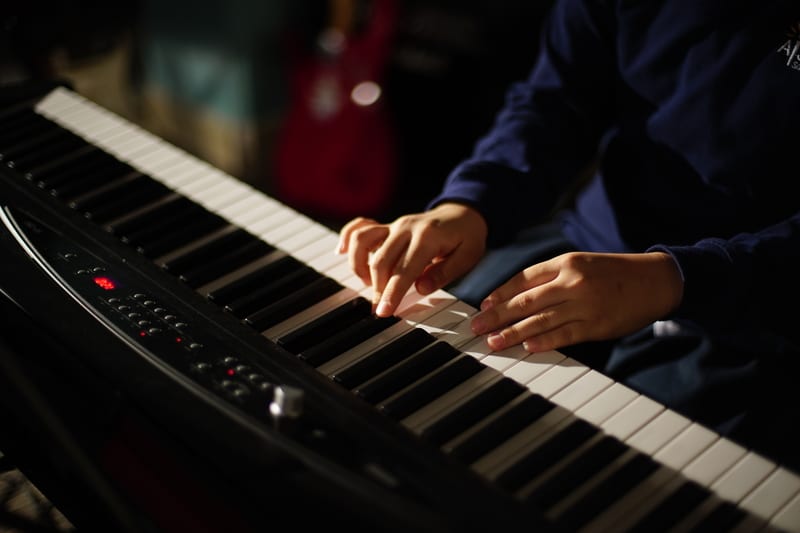
Almost all musicians who live in an apartment face a similar problem: dealing with neighbors. The loud sound that comes from the instruments may be uncomfortable to the person who lives next door or to a family member who needs moments of silence.
However, in most cases, the problem can be resolved through dialogue. In the worst scenario, the quarrel can become a court case.
But do not worry: there are many steps that can be taken before and that can be beneficial for both parts, and to avoid bringing this matter before a judge, you can follow the tips that we prepared for you in this article.
Practicing Violin In Apartment
Musicians need to practice
Sometimes people think that because players already know how play their instruments, they do not need to practice anymore. However, aspiring and professional players must practice many hours daily, especially if there is any peformance or audition coming up.
Even during vacation most players do not put their instruments aside, and there is an important reason behind that: playing an instrument well depends on the maintenance of fine motor skills, and one day without practicing is enough for the player to start losing their coordination.
Dealing with neighbors
If the room does not have any kind of acoustic isolation, the sound will definitely be heard from the outside and neighbors may start complaining.
Of course they have their own reasons: perhaps they have a headache, perhaps they work in the night shift and need to sleep during the day, or just need to study without being distracted.
Both parts have valid arguments and the solution must be fair to both. In some cases the musician will have to find a more appropriate time of the day for his practice session.
In other cases the neighbor will have to become more tolerant if the musician is not breaking the law. If no agreement is to be made at this point there are still many solutions that can be satisfactory to both parts.
Acoustic treament
One of the first things that come to the mind of the violinists is trying to find acoustical solutions to avoid the sound spread throughout the building.
In some cases, simple solutions like putting sponge or cushion like materials in the walls or closing any openings under the doors and windows can be effective.
If the problem is still persistent, there are companies that can project structures that prevent the sound from dissipating to other rooms.
This option is usually very expensive and not all musicians could afford it. Nevertheless, newer and cheaper ideas can be found on the market every now and then.
Mutes
Instead of treating the acoustics of the room, many violinists muffle the sound of the instrument with a simple tool: the mute. The mute is a piece of rubber, wood, or metal that can be put in the bridge.
It works like that: by squeezing the bridge a little, the mute prevents it from vibrating, and consequently the sound becomes much softer. The mutes can be homemade in many ways, perhaps the most common of them is already at hand: a clothespin.
Some kinds of paper clips and hairpins can be used as well and the idea is the same: placing these pins in a way they hand be attached to the bridge.
Silent practice
Practicing the instrument has much more to do with mental focus rather than actually producing the sound. For the violinist, one exercise that proves to be very effective is the practice without the bow.
By putting the bow aside, the violinist can still practice effectively by pretending he has a bow in his hand. This exercise can be part of the daily routine. What’s more, it improves focus and saves time of practice. As a consequence, memorizing difficult passages becomes easier.
Silent practice is widely used by professional musicians who perform a lot worldwide and do not have the time nor the opportunity to practice in hotel rooms or between flights and that is also the reason why they can keep up with a difficult repertoire without having enough time to actually play their instruments.
Exercises
It is a common thought that a big part of the violinist’s practice session should be devoted to mechanical exercises of hands and fingers. What many violinists fail to realize is that they do not need to actually play their instruments to achieve the same results.
To illustrate this, let’s consider some vibrato exercises: the goal is to strengthen the arm and let the hand move regularly back and forth.
It does not have to do with sound, and arm can be strengthened in many ways, even at the gym, with the correct exercises. Same is valid for the strengthening of right.
Finding a practice room
Many players forget that there are many music schools, music studios, local theaters or even churches that can offer their spaces temporarily.
Some of them may charge a small fee, but if you can explain the situation, you can negotiate a free room in exchange of performances or lessons. It is always worth trying it especially if you are having troubles with neighbours and can not interrupt your practice routine.
Things to do without playing the instrument
Apart from practicing the instrument, there is a list of things that can be done and that are part of the musical education, and thot are sometimes ignored by students, which include solfeggio, sight-reading, music appreciation and sometimes even learning a harmonic instrument like the piano.
All of these aspects are fundamental for the complete education of the musician.
Conclusion
Living in an apartment may not be easy for those who play a musical instrument like the violin because the complaints made by neighbors are very common. Talking to them and explaining the reasons why you need to practice is the first step towards reconciliation.
Even if they do not seem too positive about the situation, there are still ways you can find to reduce the amount of time you spend playing the instrument. We hope you can benefit from these tips and we wish you great studies!


